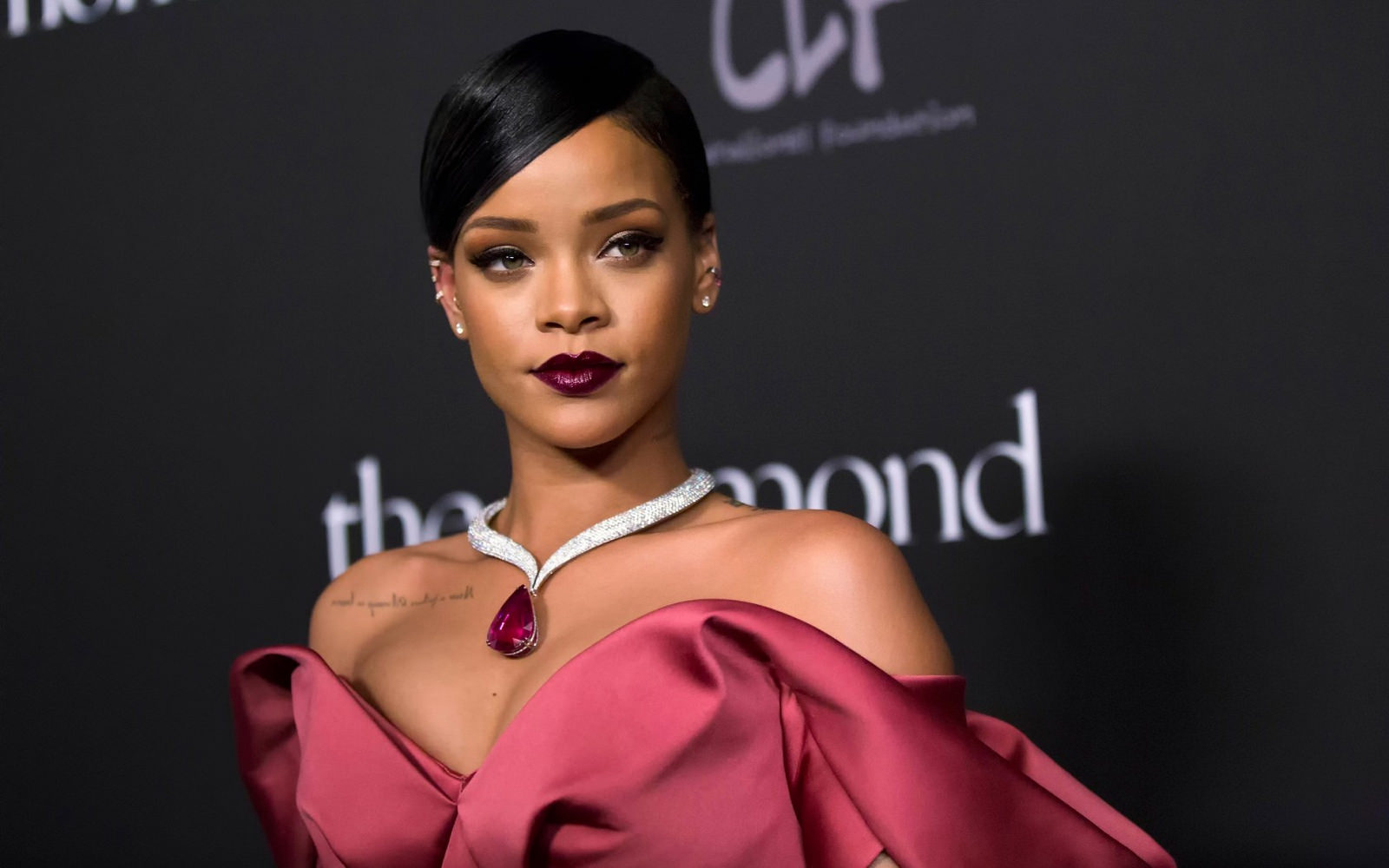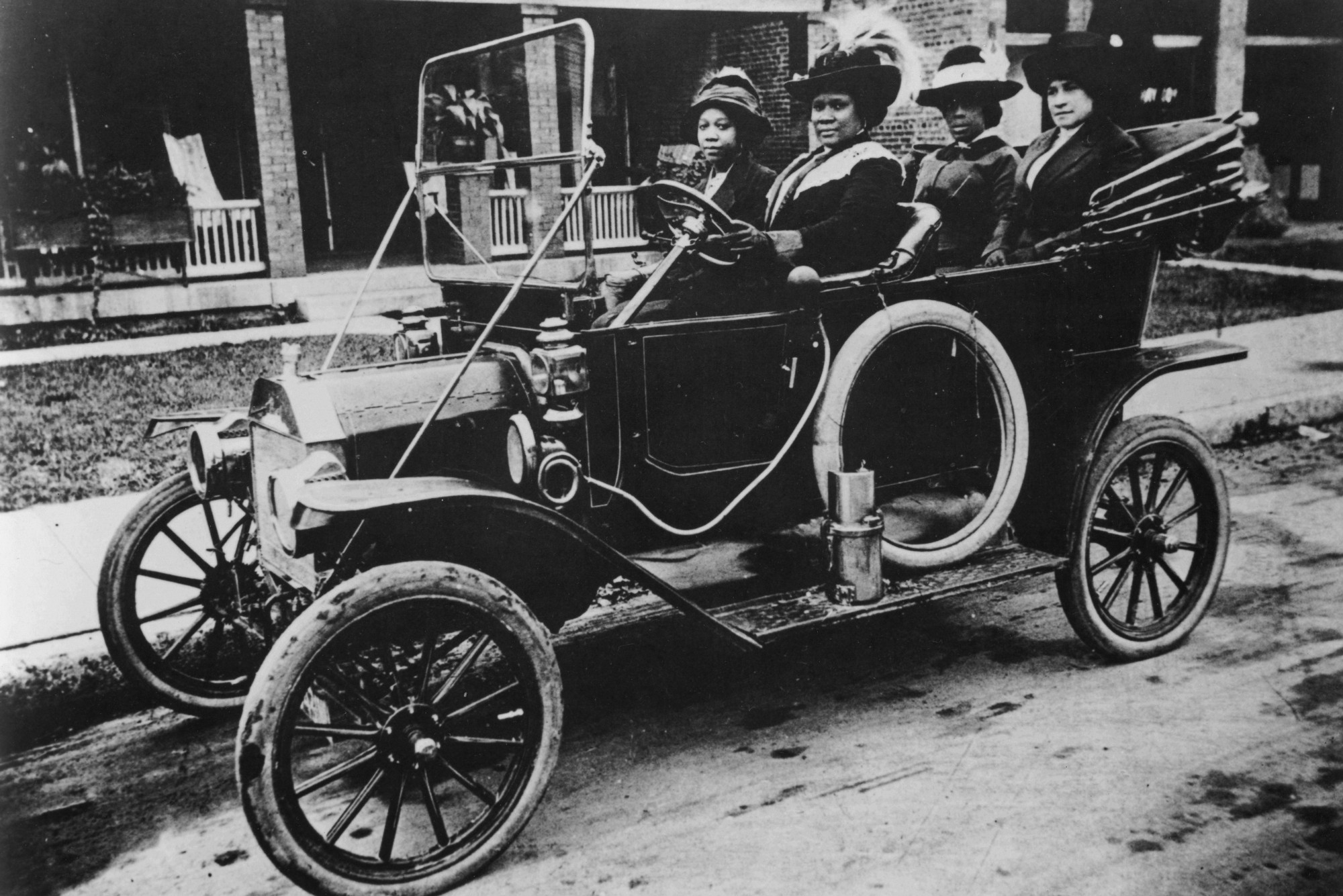The Subversive Praxis of Black Beauty and Wealth

Having rocked the cosmetics industry last month with her new line of products, Fenty Beauty, pop star Rihanna (née Robyn Rihanna Fenty) was recently a headliner for Vogue’s Forces of Fashion conference in New York City. Marketed as an all-inclusive beauty line with forty different foundations for every complexion, along with numerous highlights and liners, Fenty Beauty became one of the fastest selling products, with early reports that the darkest shades of foundation sold out. It was clear from social-media testimonies – from those who possessed albino to midnight-black complexions – that Rihanna captured the right tone for diversity and racially inclusive marketing.
What strikes me about this commercial narrative is not just how Rihanna struck the right chord for women of color, but also how Fenty Beauty has the potential for subversive praxis and resistance against what Yaba Blay calls the “commodity racism” of Eurocentric advertisements. Here I refer to the popularity of skin-bleaching creams on the African continent, on Caribbean islands like Jamaica, and in countries like India. Indeed, Dove – a subsidiary of Unilever, which markets the skin bleacher Fair and Lovely – recently created controversy with a Facebook ad featuring a Black model removing her blouse and transforming into a white model, in a colonialist throwback to “Washing the Ethiope White” that recalls racist views equating blackness with dirt and whiteness with cleanliness.
Set against such white supremacist industry ideologies, Rihanna’s Fenty Beauty places women of color at the center, as seen in the commercial for the product. Opening with the dark-skinned model Duckie Thot – a Sudanese-Australian who revealed that she was once teased for her complexion – Fenty Beauty demonstrates how dark-skinned beauty is foundational to its line, which incorporates the shades of Latinx, Asian, lighter-skinned Black, brown, and white women. Even the inclusion of Somali-American hijabi model Halima Aden expands the global market. Indeed, Aden’s inclusion in the ad recalls Rihanna’s own controversial fashion experimentation with the hijab that she wore while touring in Abu Dhabi back in 2013. However, what some viewed as reckless cultural appropriation, we might instead interpret as the brown-skinned Bajan mobilizing her identity in the globalization of the Black body – in which her lighter-skinned brownness could be “read” through the lens of Arabianness or Latinidad (as represented by her Vogue Brazil cover).
While some Caribbeanists like Carole Boyce Davies would view such globalization practices as potentially erasing Rihanna’s blackness and Caribbeanness, we may recognize here instead the visibility politics accorded with what Davies calls the “blonding” of the Black female body, one that pop stars from Rihanna to Beyoncé to Nicki Minaj have negotiated in the commercial presentation of their bodies. However, Rihanna’s own self-presentation at the end of the Fenty Beauty ad, which anchors the commercial, signifies that she is not simply a capitalist appealing to other women; she is is in fact a beautiful woman who is also “one of us,” a normalized, localized and eventually globalized presentation of the self that dares to suggest blackness – as a default identity – can indeed be “everyone else,” a direct departure from the normalization of whiteness. After all, it is not surprising to imagine a woman of African descent – albeit one with lighter-skinned privilege – envisioning a beauty line for racial inclusivity.

Rihanna’s latest cosmetics contribution recalls the earlier work of Madam C.J. Walker, née Sarah Breedlove (1867 – 1919), who became the first African American millionaire by selling hair care products and establishing Black beauty schools. Like Rihanna, Walker aligned herself with her potential customers – also recruiting among them sales agents and beauty school attendees – and marketed her products against the grain of typical advertising that emphasized whiteness as beauty norm. Where hair products from the late nineteenth and early twentieth century stigmatized dark skin and unstraightened hair with promises of whiteness, Walker’s products, as noted in Noliwe Rooks’s Hair Raising, instead emphasized hair growth and health, embedding her marketing strategy in “race pride” and women’s empowerment. With the success of her enterprise, Walker could model independence, self-employment, and agency over self-presentation for the majority of African American women who mostly labored in farming and domestic work (both in the South and the industrial North, the site for the Great Migration).
However, as historian Kate Dossett argues, it was her daughter A’Lelia Walker (1885-1931) who convinced Walker to expand the self-made millionaire narrative into conspicuous consumption – recognizing the power of not only Black entrepreneurship but Black consumption as political practice and subversion of white supremacy. As Dossett posits:
Madam Walker more often relied on the language of production, physical labor, and respectability to underline the intrinsic value of hard work, [while] A’Lelia confidently embraced the language of consumption… A’Lelia’s promotional work for the company relied on the projection of her glamorous lifestyle, which emphasized conspicuous consumption rather than the daily grind, riches rather than rags—where she and the race were heading, rather than where they had come from. By contrast, Madam Walker’s early marketing strategies had focused on her extraordinary transition from hard physical labor for white employers, to self-employment as a washerwoman, and finally success as an entrepreneur, independent producer, and eventually race-conscious consumer. These contrasting marketing strategies reflect the generational differences between Madam Walker and her daughter and their different responses to debates about labor, respectability, and consumption.1
Such differences in presentation would even transform Walker’s luxurious estate, Villa Lewaro in Irvington-on-the-Hudson in upstate New York, into a hub for racial justice work – where Walker hosted, for example, the International League of Darker Peoples in 1919 before she died, while her daughter threw lavish parties there on the weekends while nurturing the New Negro literary and artistic movement known as the Harlem Renaissance. This generational tension between the emphasis on luxury (A’Lelia Walker) over hard work rewarded in possessions advancing the race (Madam Walker’s narrative) reflects the continued discomfort among African Americans in embracing pro-capitalist projects, which are often constructed as at odds with social justice and racial progress.
On a surface level, Black beauty and Black wealth engage superficiality and commercialization that distracts from the harder struggles over racial discrimination, not to mention the perpetual objectification of women’s bodies (often resulting in the marginalization and erasures of darker-skinned women). However, women like A’Lelia Walker existed in an era that witnessed the expansion of possibilities for Black women, as seen in the stylized presentations of blues women who were also raising the specter of subversive sexualities in their music. A’Lelia Walker, herself, was rumored to be queer, and her lavish clothes – replete with turbans and red satin boots – signaled for African Americans new possibilities for Black leisure and wealth that distanced them from the era of slavery only a generation removed. Such photographs as James VanDerZee’s 1932 “Couple in Raccoon Coats,” for example, testify to this ideology of Black beauty and wealth as advancement of the race.

This all would change, once the Great Depression hit, and by the time A’Lelia Walker died in 1931, her mother’s business was in decline – unable to compete with the mass marketing of larger white-owned companies – and Villa Lewaro, willed to the NAACP, was sold since the organization did not have the funds to manage the estate. Perhaps there is a cautionary lesson here – that such commercial trappings are ephemeral – and we have yet to see the cultural, business, and political influence of Rihanna’s Fenty Beauty, which was established through the LVMH corporation’s Kendo brands and sold through Sephora cosmetics stores. Indeed, such feminists as Andi Zeisler has cautioned other feminists in embracing what she terms the “Empowertise Me!” branding of feminism that seduces women into believing the right product and the right commercial brand can substitute for mass political and social movements.
However, given the fears of Black wealth and this nation’s efforts to perpetuate African American poverty – we need only think of racist stereotypes like the “coon” image, which suggested that African Americans will inevitably fail in their attempts at white middle-class assimilation, or the wholesale slaughter of well-to-do African Americans whose town in Tulsa, Oklahoma (dubbed “Black Wall Street“) was completely destroyed in 1921 – we must view such efforts at Black self-fashioning and purposeful Black consumption as acts of resistance. After all, there is something inherently subversive in African Americans reclaiming their very bodies, which were once commoditized through chattel slavery and served as the source of this nation’s wealth. Such resistant acts necessarily complicate how we analyze Black pro-capitalist projects.
- Dossett, Kate. “‘I Try to Live Somewhat in Keeping with My Reputation as a Wealthy Woman’: A’Lelia Walker and the Madam C.J. Walker Manufacturing Company.” Journal of Women’s History 21, no. 2 (Summer 2009): 90-114. ↩
